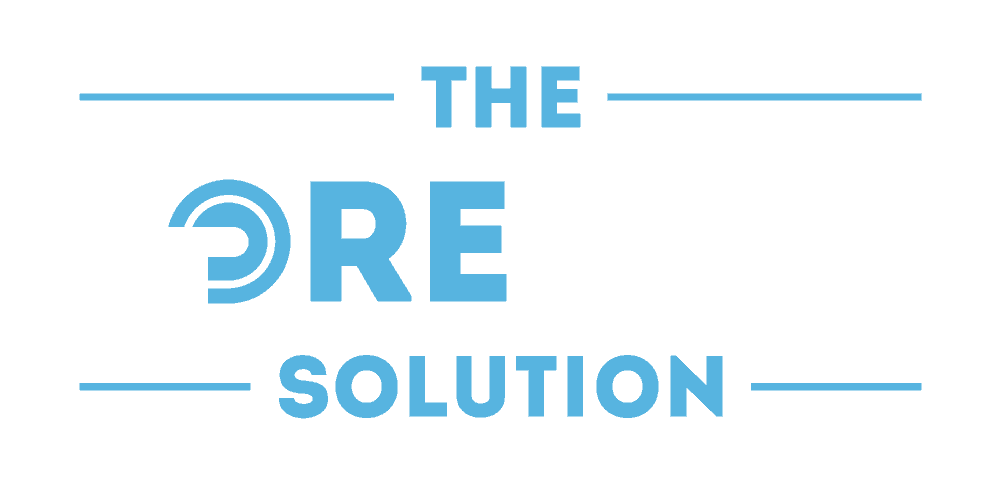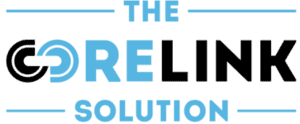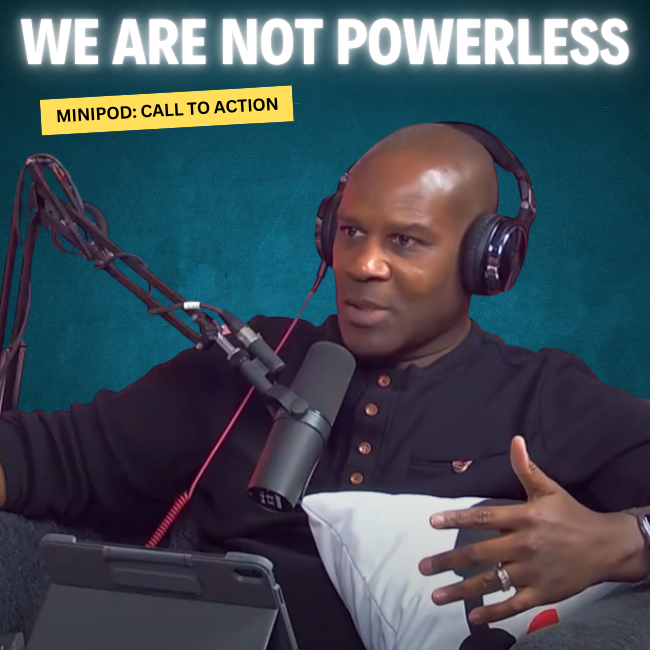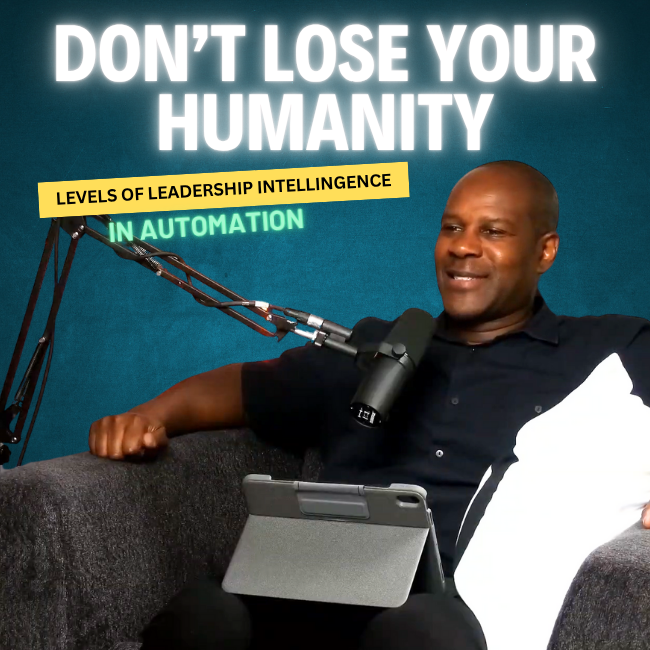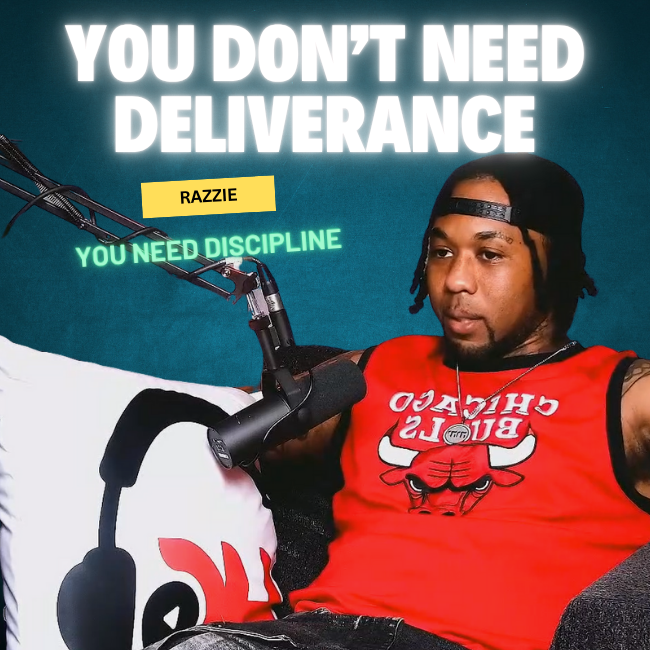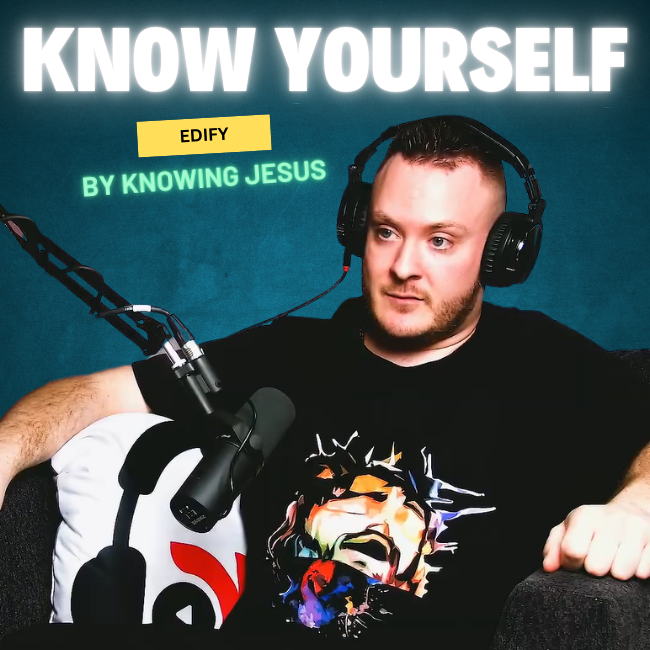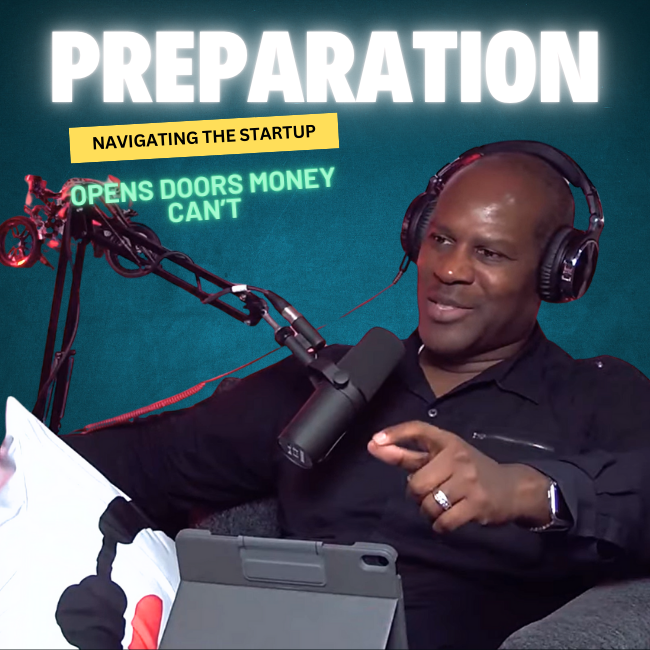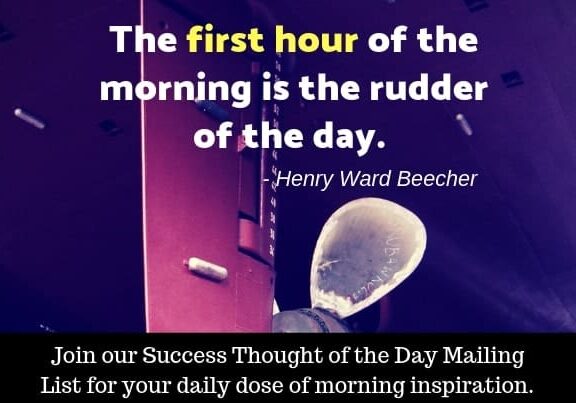Episode 38: Five Steps Towards Partnering with Higher Education to solve Systemic Racism with Greg Hanifee
Subscribe: iTunes | IHeartRadio | Spotify | Stitcher
Many are inspired to contribute to the eradication of systemic racism but struggle with how best to do so given challenges that span areas such as criminal justice, education, economics, voting, healthcare, and beyond.
Institutions of higher education can be engaged as allies provided you understand the landscape and have a strategy. They are the largest employers in 10 states and two-thirds of America’s 100 largest cities, employing nearly 4 million people. Economically, these schools hold nearly $600 Bn in endowments. They cultivate entrepreneurship, incubate new businesses, and provide through-leadership to companies large and small throughout the world.
Greg Hanifee (Associate Dean at the Kellogg School of Management) and I will provide you with some clear ideas for partnering, engaging, and driving forward.
The Transcript
James: Alright my friends, welcome to another episode of The Corelink Solution, where we look to empower you with awareness and actionable insights. For those of you joining us on the Livestream, thank you as always for being a part of it. Please feel free to ask your questions within the comments section of Facebook or chat on YouTube, and we will do our very best to answer them.
Tonight’s conversation is focused on truly, the words systemic and institutional. And such, you might ask, why are we talking about institutions of higher education? And to that point, let me give you some background. As an employer, higher education institutions are the largest employers in ten states, as well as two-thirds of America’s one hundred largest cities. Overall, US colleges and universities have endowments valued at nearly six hundred billion dollars, employ nearly four million people, or more than two point five percent of the population. Colleges and universities cultivate entrepreneurship, they incubate businesses, and those who attend college are twice as more likely to own a small business than those with high school education or less. So, all told, higher education has a tremendous impact on the state of our culture, our economy, and more. And so, what we want to do is have a very vibrant conversation tonight and I can think of no one better to invite than someone I consider a friend, a colleague, and specifically to this topic, an ally, in Greg Hanifee. Greg, welcome to the conversation.
Greg: James, it’s really my pleasure. Thank you very much for having me in tonight.
James: Absolutely. And let me properly introduce Greg. Greg serves as the Associate Dean of Degree Programs and Operations for the Kellogg School of Management at Northwestern University, where he oversees the portfolio of degree programs, student life operations, admissions, global program offerings, career management, and academic experience. Prior to his recent appointment, he served as the Dean of Executive MBA Global Network, since joining Kellogg in 2013 after four years at the University of Maryland Smith School of Business. Prior to the University of Maryland, Greg spent twenty years in the telecom industry, and he also launched a German-US design agency in Shanghai in 2006 and served on the board of directors there until 2019. On a personal note, he also earned his BS in Chemistry from the University of Delaware, an MBA from the University of Maryland, and he and his wife EK live in Chicago and have two children, Tess and Jack. So again, Greg, so happy to have you with me this evening.
Greg: Yeah. James, no, I was really excited to join you for this conservation. And you’re giving me, that title is a mouthful, all the different roles, and responsibilities. But I have to say, having the opportunity to work with folks like yourself have really created a platform for me to succeed. So, we might get into that a little bit later too in the conversation.
James: That’d be great. Thank you, Greg. So before we jump into the meat of the conversation, I always like to ask a question to kind of give folks the opportunity to get to know you a little bit. If you can, and having known you for a while now, this is going to be hard because you share pretty openly. What’s one thing you think you can share that most people don’t know about you?
Greg: Yeah. I think a lot of people assume that I grew up in a big city because I’ve lived in a lot of big cities for my whole life. DC, Prague, Shanghai, Chicago. I actually grew up on a rural state road in Maryland, working on dairy farms from twelve years old up until I went away to college. I knew I didn’t want to be a dairy farmer so I got out of town as fast as I could, using education, which we’re kind of going to talk about tonight. But my roots go back to a pretty simple way of living, and I think that typically surprises people.
James: Yeah, absolutely. So, did you disappoint the family? Your father, grandfather, etcetera?
Greg: Grandfather, probably. I think my father was an educator. He taught middle school and high school. My mother was an operating room nurse. So I think they were quite happy that I found a better path, but there are certainly family members out there that probably wish I was there helping them with the cows and everything else. Yeah.
James: We’re glad you decided to take another path. So, as we go into this a little bit, I set some of the context for people around higher education. But what would you add to that? Maybe start specifically with Kellogg, to get some sense of scale. On an annual basis, how many people, professionals, do you help at Kellogg?
Greg: So Kellogg is a graduate school, we’ll start there. So some schools, business schools, serve undergraduate and graduate audiences. But Kellogg has about twenty-six hundred students every year, coming through the doors, either first year, second year, or there for doctoral programs, which might be four to five years or longer. We sit as part of Northwestern University, which has about twenty-two thousand total students in the population, predominantly undergraduate. But we’re outside of Chicago, in Evanston. We have a satellite campus in Miami that serves our executive MBA program. We have global partnerships – Hong Kong, Beijing, Tel Aviv, Germany, and Toronto. But it’s a pretty vibrant educational community. To your point earlier about staff and employment and etcetera, Northwestern University, Chicago itself is home to a lot of universities. You start to think about all the people that are employed throughout the university systems, it’s a big part of the economy of Chicago, I have to say. Some of my brothers and sisters that work at DePaul or Loyola, University of Chicago, the University of Illinois in Chicago. It’s quite the fabric of our city, and it’s probably not too dissimilar to Philly, where you’re based, James.
James: Yeah, absolutely. And when you think about that, to the point, being a part of the fabric and its far-reaching impacts, as you have been trying to process this, when you think about the events of George Floyd and all the other events that have happened, because there’ve just been so many. How have you been processing that?
Greg: Yeah. You know, I’ll tell the audience that you teed up this question for me a week ahead of time. So, I’m very grateful for that. But I think it’s still a daily process for me, James. I think originally I was just trying to understand how this could happen today. Right? I think, like many people. And for me, understanding I think, for the first time, what it meant to be an ally. I heard that term before. I think our students absolutely use it. And starting with reaching out to black and brown friends and checking on them, going through that process of not even knowing what to say or what to ask, and learning from them. Very gracious, in terms of helping me go through that. And then, I think starting to reflect on “What is my role in all this?” As a leader at an institution, as somebody that gets to help shape and influence people’s lives when they come into an institution of learning, I have a voice that probably matters. So what do I need to do, not just to talk but also to show action? How do I convene the right conversations? So I think, for me, it’s been a process of understanding what my responsibility is to actually make change happen. Because we’re at the point where change has to happen. And I think we’ll talk about this a little bit more, whether it’s Kellogg or other places. I think it’s great to be an ally, but it’s “What are you going to with that as well?” I think we’re learning there are different places on the spectrum of being an ally, and there’s a space for everybody along that spectrum. But I also had to think about personally, “What does it mean for me? What do I need to do?”
We chatted a couple of weeks ago. You were kind enough to join for a conversation with some of your fellow alums and an audience at Kellogg. And after that evening conversation, honestly, I was a little bit down, because I was so emotionally moved by what everybody had to say. There was also optimism in the conversation. But to me, talking wasn’t enough. What were we going to do? One of the panelists, Ria Aiken, called me, and she said, “At this point in time, this is what we need to do. We need to have conversations. We need to have conversations with people of all colors, of all walks of life, so they understand.” So for me, I think, James, it is going to be a continuous evolution of taking steps. What actions can I take today? What can I do tomorrow? And then also trying to be an influencer at Kellogg to make things happen as well.
James: You know, the words you said around trying to figure out what your role is I think are words that probably resonate with a lot of people. There are a lot of words that are either coming to light for the first time, like I’ve never heard the word “allyship” so much, right? Or they’re coming to light in a different way. I’ll give you an example. Last week, or it was the week before, the word empathy had never hit me as hard before. I made a post around this, you know, there’s such a distance between hearing in empathy, and I just literally wrote down the difference between, the definition between hearing, listening, effective listening, and empathy. And how different it is. Empathy is defined as understanding and sharing in the feelings of another. When you think about that, “sharing in the feelings…” Right? And to understand and then share the feelings that, someone said, “Man, this house is on fire. My house is on fire.” Right? To share that feeling. So, when I say the words, for example, systemic racism or institutional racism, what comes to mind?
And I’d actually like to read a small passage. I was looking at this passage from Black Power: The Politics of Liberation by Kwame Ture, formerly known as Stokely Carmichael and Charles Hamilton. It says, “Racism is both overt and covert. It takes two closely related forms…” I’ll skip through some of it because it’s a long read. “But we call these individual racism and institutional racism. The first consists of overt acts by individuals, which cause death, injury, or the violent destruction of property. This type can be recorded by television cameras; it can frequently be observed in the process of commission. The second type is less overt, far more subtle, less identifiable in terms of specific individuals committing the acts. But it is no less destructive of human life. The second type originates in the operation of established and respected forces in the society, and thus receives far less public condemnation than the first type.”
Greg: Yeah. No, it’s powerful when you reflect on how oppressive that really is for people. The overt side of things, it’s – we talk a lot about bias. We research this at Kellogg and I know it’s something that’s done at many universities and studied by many psychologists as well. The biases and implicit biases that we have are shaped by our environment. Right? At some level, I think what’s happened leading up to, with the unfortunate death of George Floyd, has forced a lot of us to think about, “Where did these biases come from? And are we turning that into overt racism, moving into more institutional or systemic racism?” So I think in higher ed, just like any university, there are systemic challenges to people of color who want to move on into study. For example, I think the percentage of students going into undergraduate study over the past, let’s say in 2018, I think there’s about sixty-two percent of those students who are black or brown, graduating from high school, went on to undergraduate study. And I, living in the graduate school world, what’s happened has sort of widened my eyes to the fact that they typically carried more financial debt as they go through that than a white counterpart. And typically, more often than not, it’s a higher level of debt. It’s not just the percentage of people that have to borrow, and there’s a lower percentage of people that get support from their parents, who are black and brown, than white. So, part of this starts with the whole wealth gap that exists between black and brown people and white people. So then in the graduate world, we start thinking about, “Okay, what is the opportunity for us to educate at the graduate school level, black and brown people?” There’s sort of this limit because of financial considerations, that can only be solved in the short term by more scholarships. So, Kellogg, like a lot of business schools, we sort of are stuck in this fourteen percent representation of black students within the population at MBA schools. The Wall Street Journal just had an article about this. That’s not going to change. There’s a systemic problem. That’s not going to change until some of the previous steps in the whole process can also change.
James: Can you explain that a bit? That fourteen percent piece?
Greg: Sure. So if you look at the population of students who are studying at the graduate school level, in business. So some may go to law, some may go to medicine, some may go to education, etcetera. But the latest statistics, I think I saw 2018 from the Council of Graduate Schools, the percentage of black or African American self-declared students studying business is about fourteen percent. So thirty-one thousand students, thirty-two thousand students across the entire US population. And that could be a private school, public school, private for profit. So, I think when we start to talk about systemic challenges in higher education, it actually starts with kids coming out of high school, going into college to begin with, and what they’re already burdened with, in order to move forward. So, we’ve got to think differently about how we change the equation much earlier in the process, is sort of what I’m talking about, from a systemic perspective and how do we create? The other systemic challenge is if you think about applying to business school, you have to take the GMAT. Well, a lot of kids, if they want to do really well in the GMAT, they have to pay for prep classes or pay for a tutor. And that’s not possible in some socio-economic situations. It goes back to the SAT, just getting into undergraduate school as well. I think from a societal perspective, there are things that institutions can change in tutoring but there are also these broader questions that we have to start to address as well.
James: Yeah, yeah.
Greg: I think, you know, some other statistics, I think for your audience, going into getting a bachelor’s degree, right? The good news is the percentage of black and African Americans between the ages of twenty-five and twenty-nine years old in 2000 was eighteen percent. In 2018, it was all the way up to twenty-nine percent. So that’s progress. But you compare it to white people, twenty-five to twenty-nine, they were already at thirty-four percent in 2000, nearly double for black or African American, and they also went up eleven percent, so forty-five percent by 2018. So, the percentages aren’t necessarily changing. More people fortunately are able to go through higher ed. But we’ve got to think about shifting the balance I think a little bit more relative to the population.
James: Absolutely. And to that point, when you think about what is in higher education’s control, so to speak, what do you think some of the biggest areas of opportunity are?
Greg: Yeah. Great question. And I like the way you phrased it. There are some things in our control and some things that are outside. I’m going to start actually with something that’s a little bit higher on the hierarchy, in terms of what we can do to influence. So, companies want to hire our students, right? We should be thinking about how we work with those companies to ensure that they actually have environments that are conducive to representing diverse, equitable, inclusive environments, and make a choice about how much we want to partner and lean into them. Because our graduates are going to go out and be the great, extraordinary, empathetic leaders that we want them to be. They’ve got to have environments that they’re going to thrive in and feel comfortable in. That’s sort of at the tail end of the spectrum, but that’s really important, to start having these conversations with companies that want to come hire our students. Because then I’m going to get to, “What are we going to do when the students are with us?” And I think my philosophy working with students and working in what we call the student life arena is you’ve got to create a house where people feel valued, where they feel that they’re there with their whole worth, and if you can do that then other potential students are going to be attracted to it, because there will be this viral effect of “If I feel comfortable where I am, and I can be myself, and I feel like it’s an inclusive environment where I can thrive…” That’s what we need at Kellogg. That’s what every institution should strive for. Then we start to think about, “Who do I need to go to attract to come to my school? How do I get that fourteen percent of students who are black or African-American, to be twenty percent? Or even seventeen percent?” But if I bring them in and they’re not having the experience that they’re going to thrive, it doesn’t matter if I get seventeen percent for a couple of years. It’s not going to create the change that I feel the school has an accountability to be able to create.
So then you step back even further, so now we’re talking about, “How do we find the best and brightest and the most talented students to come in?” and there we have to think differently as well. We have to think about talking to potential students even when they’re an undergrad. So, they may work for five years, and then come to Kellogg, or work fifteen years and come to Kellogg, but how do we tell the story of what it means to have the opportunity to come to Kellogg, to have the network that enables them and help shape the story – not in a way that we’re ad people, but shape the story so they understand that there’s the potential for them to do even more if they stretch their thinking and think higher. There are internal things that we can control. How do we think about the cases that we teach and are they representative of all walks of life – black, brown, Latinx?
And then also the faculty, I think. How do we develop faculty with a broad view of what inclusivity means? A view of where people come from and why that matters and their interpretation of different problems and how they might approach solving those problems. And then there’s also a recruitment question around people of color that would be faculty. How do you make that happen? So there’s actually a lot under our control, and I think that’s where Kellogg is right now in prioritizing both with the leadership, the students, the alumni, about how we’re going to move this forward.
James: Yeah. Got it. Those were some good thoughts. Hey, when you think about piercing the hallways of corporations and trying to create an environment that will, not only welcome those individuals in but help them, for lack of better terms, matriculate and get towards the right seats. I mean, my God, we’ve seen the business case… [laughs] Years, right? I mean, that business case has been shown, repeated, reheated, rebroadcast… I mean, it should be on Netflix by now, okay, as a centerpiece. What would have to be drastically different to really make it take hold in your mind?
Greg: You know, James, you’re absolutely right. I mean, I think Kellogg, as a school of collaboration, has long professed that the diverse teams way outperform two and a half times teams that are homogeneous. And these studies have been going on for a long time. So what’s taken us so long, for the business world, to actually see that and implement it? I think an event like what just happened. Unfortunately for George Floyd and his family, I think the conversations that I’ve had over the past couple of weeks do give me some optimism when I talk to alums that are at these companies. And there has to be movement from lip service to action. I think there also has to be an employee uprising, in a way, to demand and hold companies accountable. I think it’s not exactly the same thing, but I also see what’s happening with Facebook right now and companies pulling their advertising because they’re not monitoring what’s actually happening, and the hate and vitriol that happens on Facebook. Other companies can speak with their money, and not by services from, let’s say, xyz company. I think that’s what it goes back to, is change happens, and this is something that we’re talking a lot about a lot at Kellogg, change happens when you have leaders who are committed to it, but also put the right processes in place to take people from just being vocal and animated where they are right now. And it’s taking a moment, somebody told me this the other day, it’s taking a moment and turning it into a movement. Right? So, the moment culminated with George Floyd’s death. Now it’s the movement. The other reason I have optimism I think is, I think about my children are in their twenties. That generation is not tolerating a lot of standing around and not doing anything. So, if there’s a way to continue to keep them energized, and also they’ll walk away from jobs much more easily than maybe you or I did. They just feel like, “If this isn’t for me and you guys aren’t walking the talk, then I’ll go somewhere else.”
James: Right. Absolutely. So, you know, one of the things we’ve seen to your very good point is this unrest has created, probably, at least in my lifetime more corporate actions than I’ve seen, at least more publicly recognizable corporate actions. And you know, sometimes you have a conversation with folks and they go, “Well, that looks genuine, that one doesn’t look genuine, looks like they just crumbled under pressure…” You can go, “Well, is it is or not…” And to a certain degree, you know what, in the pot of interest right now, we’ll take it all. [laughs] I think we’ll take it all, whether it’s genuine or not, and we just have to hold them to it. But you used a very good word which was accountability. When you think about that, and start to think about, again, the space of higher ed and what it is in control of, how are you starting to feel, assess, connected to your first point around your role? Even in your new seat, right? How do you think about settling into accountability for what Kellogg has started to commit to or not? How are you feeling about that?
Greg: So, I think many of us at Kellogg feel like this is an opportunity to actually reframe a lot of what we’ve talked about, and restate. And lastly, I think, find our purpose in a way, refind our purpose. So every school has its own unique personality I think, and Kellogg has had this personality for years of being collaborative, of being innovative and creative. I will use the word empathy. We’re talking a lot about that right now, how to create extraordinary, empathetic leaders. But the part that I really like is the focus on trust and transparency. There’s a professor who’s a mentor of mine. Unfortunately, he passed away a few years ago, Keith Murnighan and he said, “Why don’t we start with the premise that I trust you? Instead of the old phrase, ‘You have to earn my trust,’ walk in the door and I trust you.” And look, it’s amazing how things change when you have that attitude and this is something that we’ll talk to our students about all the time. Now, trust also means your intentions are positive. You may not always get it right but your intentions, I trust that your intentions, James, are positive and you’re trying to move the organization forward or you’re trying to move the school forward. So we’ve got to start with the fact that we have to have trust in this process because stakeholders are students, faculty, alumni, the rest of the university, staff. And then, transparency. We’re setting an objective that we want x percent of our students to be black or African-American by y year. We’ve got to measure it. And we have to report on it. And we’re gonna do it, not just internally, but we’re gonna do it externally. So as we go through this process, transparency is paramount, but everybody has to start with the fact that there’s a trust-based system because the metrics and the targets have to be built from everybody working together and understanding all the implications of what that metric means, right? So, we’ve got constituents that business schools and universities are kind of interesting. Organizations typically have employees, customers, shareholders, or a board or something like that, and that can define maybe vendors, that can define the constituency base. I’m not saying it’s better or worse, or harder or easier, but universities have many different stakeholders. So we’ve got to start from a basis of trust, build transparency around what we’re going to measure, measure it, be accountable for it, be ready to say “Were we right? Were we wrong? Did we get it right? Did we not get it right?” Adapt and continue to move on.
James: Yeah, yeah. You know, I was thinking through, you know, as you were talking about those stakeholders, and I don’t envy your position and… Dean… I always mess her name up. I call her Dean C.
Greg: Cornelli.
James: Yes, Cornelli. I don’t envy your position of dealing with those who help fund the endowments, etcetera, and all the work you guys have to do to keep those conversations going and building the population. The one thing though I think about is how do you – it’s almost like, when you have a major strategic initiative inside a company, right? You need to go sell in a committee and that committee’s twenty people. Those of us who’ve ever done it, you know you don’t walk in cold and try to sell all twenty people, you have to pre-sell at least half the room so you walk in and you’ve got the vote, right? And so on this one, I kind of think about it from a couple of different layers. One, we’ve seen some great academics help solve some of the world’s most challenging problems. Even now, you think about Harvard business review’s readership of over a quarter-million folks who are problem solvers, right? If we were to turn this thing on its head and higher ed decided it was one of the top problems, or do we need an Elon Musk type to come and dedicate his time… [laughs]? How do we do that? Is there a way to go that course that it gets lift? Because what I worry about, quite honestly, is the – what’s the word I’m looking for – let me take it out of this one and use another metaphor to help bring it home. It’s almost like, there’s a reason why churches have soup kitchens. “I’m not just going to pray for you, I’m going to pray for you and feed you.” The “pray for you” is almost like, that means, “I think you’ll just sustain your life and you’ll continue to live.” And I’m telling you, “No, I’m dying!” The pray for you and feed you is acknowledgment that “You heard me, right?” And this is back to the empathy point. And so, I’m just looking for that sense of urgency to make that declaration of, “No, we actually have to fix this.” And we’re going to ante up the resources that again are in our control as we’ve done for energy or conservation or… does that make sense?
Greg: Yeah, absolutely. And I think it’s a really fair question and I think a really important question for Kellogg. I wanna solve it for Kellogg because I want Kellogg to be the best in this regard. I think we have a great opportunity to do it. Not to sound trite or anything, but there are exercises that we look at. Like something called “Kill the company.” I don’t know if you’ve heard of this exercise, but you bring some people together, all different levels of the organization. Not that many, because you don’t want it too big. And you say, “Alright, we’re going to create a school and it’s going to compete against Kellogg and Harvard and Stanford and Chicago. But we’re going to solve this problem, this problem of systemic racism in higher ed, representation of African Americans, Latinx, whatever that might be, how do we do it? And you take the boundaries away of what the inertia has led you to and you map this out. So that’s just one example.
The other thing I think we’re doing a lot more of now is talking to people like you, James, and other leaders and organizations that set the mark and do this really well and have them tell us, “What did you do? How did you do it?” So, last week, we had a conversation with a couple of alums, like Melissa Thomas Hunt, who got her doctorate at Kellogg, and she’s now Chief Diversity Officer at Airbnb. Right? And she talked about their process for thinking about employee retention and how they value employees and what’s important. Even in a down market for Airbnb, but the mental approach of how they’re thinking about all these things…
So, the other incredible value that we have as an institution of higher learning is incredible alums who are successful, and we want them, at this point, to teach us and hold us accountable for the measures that we collectively put together. Now, the urgency in that, to your point, which is a great point, the urgency is once we ask them their opinion, they’re not going to let us slow walk this thing into the next five years. They’re going to demand movement because it’s their brand, they’re gonna demand that we keep this moving positively forward and we win. And I think “win” in this case means we become a school that attracts people from every culture, every race, and we get to share in their success, as they come in the door and go on and graduate.
James: And to your point, if we’re living into those tenets of, I think you said trust and transparency, right? Then one of two things has to be true. If we believe in a business case, then we’re going to do it and keep to it. If we don’t, then we need to own up and say “we don’t and this does not make the priority list.”
Greg: Yeah. And that’s the transparency part, right?
James: Absolutely.
Greg: But I can tell you, we believe in the business case. And it will take, not to overuse another term, but I think it will take all of us, I don’t want to say an army, but it will take all of us. And change, we talked about this a little bit ahead of time, but this is a change process. So, we’re also going back to the frameworks of what it takes to create significant change and positive change, and what are the frameworks by which we make that happen? So this is also a case where we have to practice what we teach. We have to be able to look at the modes of unfreeze movement and refreeze, and refreeze in a place where we want to be and make sure that the processes and the systems and the rhythms and the rituals and the artifacts that we create are the right ones for the right people to be at our school.
James: Yeah. That makes sense. Well, as we start to wrap up, I’ll ask you one last question. Let me underscore this three times. In the unconstrained world of higher ed, if you were totally unconstrained, right? You are the Dean C, you are the folks filling the endowment, you’ve got total, total, total control. What’s the big idea? What would you do if you were unconstrained?
Greg: Yeah. I think there’s this idea that access should be unfettered. So, everything from “what’s it going to cost me to attend and what’s it gonna take for me to actually be there”, combined with “we know how to put you in a job after you’re done that we know you’re going to thrive in and you’re going to change the world.” So, I think for us it would never be a transactional relationship. Your future success, not because we want you to give money, (that’s okay too), but our belief is that if we create the right extraordinary leaders, they’re going to go out and change the world. And that’s part of our job. So, the unfettered access. You know, what do we measure by entrance exams? How well you take a test, maybe. So this is Greg Hanifee’s opinion. Do we need that? Or do we look at your undergraduate performance, we look at your work experience, we talk to a couple of people that you have in your recommendations. We look at how well you write. And you know, there’s an interview in there just so we can tell what kind of person you might really want to be. But will that exam really matter?
I think the other part is some creativity around how all this is financed. And there are some models out there. Now, I’m really getting into sort of the Greg Hanifee world here, where I’ve been thinking about something that’s done in Europe a little bit. Purdue University does this. It’s an income share agreement model. So, James is coming in. He’s had his undergraduate degree from Temple. I’m making it up, right? And he wants to go off and work in finance at Allstate or he wants to work in marketing at Allstate. I can project the likelihood that James is going to earn x million or x hundred thousand dollars over the next ten years. Why don’t I take a bet on him and just take a percentage of his salary that pays for the education? So, it’s more investing the other way around. You’re betting that you’re going to have a successful career if you go through Kellogg, and what we’re saying is, “That’s great. All we want to do is take, there’s a maximum amount of money and we’ll just figure out what the actuarial table might say to make that happen.”Some of those things are not brand new ideas. There are coding schools that do that today. Now the question is whether the rest of higher ed may do something like that.
James: That’s interesting. You know, you triggered a thought too, particularly when you said Temple and the ISA thing, because man, that would have helped me big time. I’m not sure if I ever told you this story. So, my last year of high school, we had just a series of unfortunate events where I dropped out of high school for a while to take care of our home. My father just went through a terrible season and so on and so forth. I tried to man up and take care of the house, which just couldn’t happen, right? So, I went to school. I get my grades in order. I wanted to be a comms major. I go to Temple. I go to Temple for a day. They call me over to the bursar’s office and tell me my financial aid didn’t go through. Nor could I get grants. You’re in this sliver, which like probably less than one percent hits it, where your mom makes too much for grants, it’s not qualifying for financial aid. I’m like, “Okay, so what do we do?” They said, “There is no ‘what do we do’. You’re out.” “What do you mean ‘I’m out’?” “You’re out.” Greg, they sent me home. I’m going to be honest. I was broke. I was broken. I mean, I had… After coming off the high school thing, and Channel 10 had recognized me for like “most improved student of the city”. I was riding high, I’m finally going to college. To be a comms major, I interviewed my favorite DJ in the city, which was Doug Henderson. Man, I was committed, and then I got booted out of Temple. And I was just in a state of disbelief. Then I just went and worked. I worked and wound up having some good mentors. I didn’t go back to finish my undergrad until my 30’s, going to school at night. So coming to Kellogg was almost, I was in disbelief coming to Kellogg because I didn’t think I would make it in, quite frankly. [laughs] I’ve had this really rough ride, but to your point of unfettered access or ISA, right? The would have helped me tremendously, I had all of the tenacity in the world. I would have pursued and worked my way through it.
Greg: And I guarantee, somebody would have bet on you. With the story that you had coming in, I mean, that’s… Smart business people know how to invest in grit and passion. So, I think that all fits together. Credit to you, I think that’s also why Kellogg loved having you come in because you had this incredible story of achievement when everything else was telling you, “Hey, you can’t do it.” And I think these sort of non-traditional paths are something that, no constraints, that’s what we should be thinking about.
James: Yeah. I love that. Greg, thank you for spending your time. I know again, you’ve got so much going on with both your new role and trying to figure out solutions to what we’re dealing with in the world right now. So I appreciate it.
Greg: James, my pleasure. And thank you for your friendship, your honesty, and I look forward to catching up via virtual or someday down the road in person.
James: Someday down the road soon, right?
Greg: Yeah, yeah. Keep doing the good work. I really appreciate it.
James: Thank you
